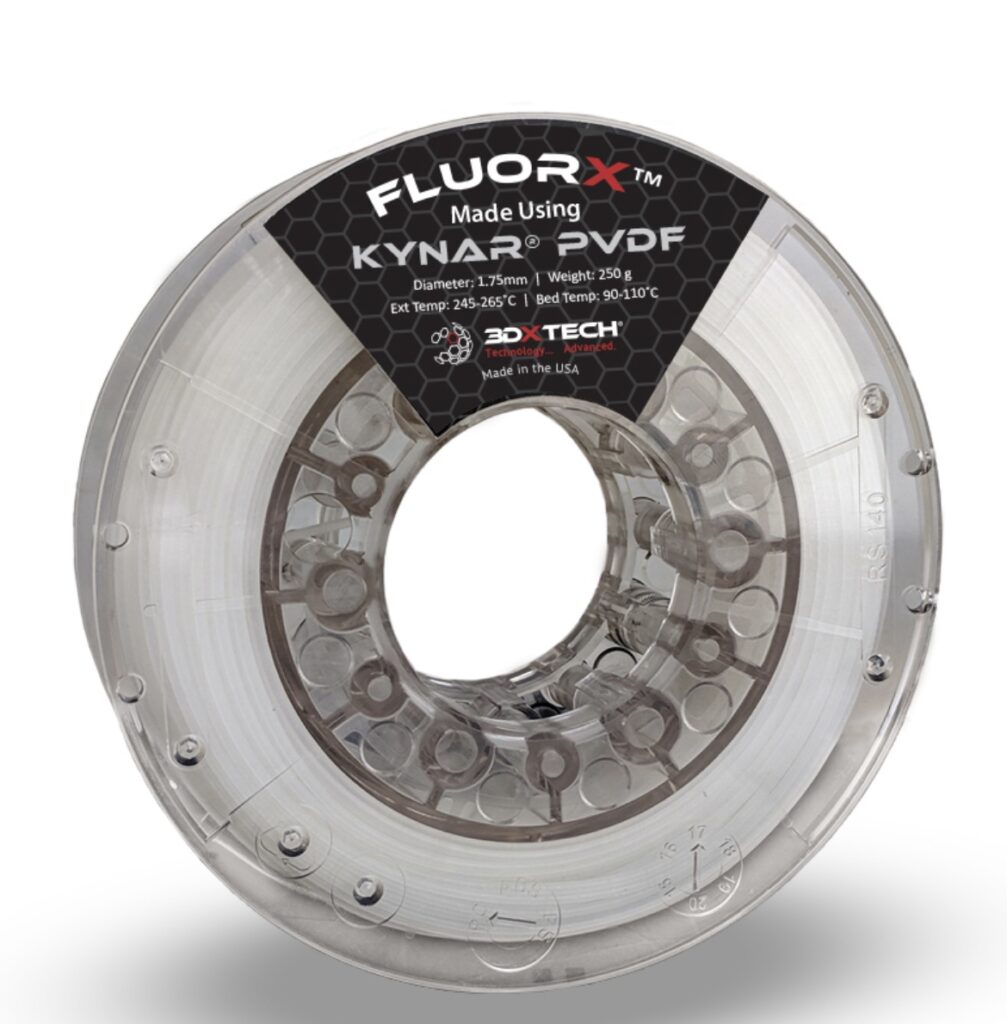Using electric poling one can make a material piezoelectric, meaning that it can convert mechanical energy into electric energy and then reverse this reaction using crystals. Research into this area as it relates to 3D printing has already been explored, as demonstrated by 2015 work at the University of South Carolina. The latest research comes from Purdue University, published in the journal Additive Manufacturing.
In a process the team calls “Electric Polling assisted Additive Manufacturing (EPAM),” Purdue scientists combined material extrusion of polyvinylidene fluoride (PVDF) with a corona polling step to create PVDF components with piezoelectric properties. They state their advantages as reducing the need for an additional process step while also expanding the design freedom to make piezoelectric components of more varied geometries. During the print process, the filament is elongated and electrically changed. The simultaneously polled reordering is what makes this possible and it results in piezoelectric activity that is five times higher than other methods.
The team used Arkema Fluor X Kynar PVDF filament on a MarkerBot Replicator 2. In a later test, they combined it with direct ink writing (DIW) to make a simple circuit. Supported by an NSF grant to make more ubiquitous agricultural and robotic sensors, the work was a part of much more extensive RoseHub research, which looks very broadly at creating new sensors for health and industrial processes. Purdue is one of the Universities in the Robots and Sensors for the Human Well-Being initiative along with the University of Minnesota, University of Denver, and the University of North Carolina, Charlotte which performed earlier work. The main idea is to use a low-cost process to make stress sensors in a myriad of shapes. The work was lead by Robert Nawrocki, assistant professor in the School of Engineering Technology at Purdue.
“During the EPAM process, stretching the molten PVdF rod rearranges the amorphous strands in the film plane, and the applied electric field aligns dipoles toward the same direction. The EPAM process can print free-form PVdF structures and induce the formation of β-phase, which is primarily responsible for the piezoelectric response. The piezoelectric activity, measured in picocoulombs per newton, or pC/N, was calculated based on the piezoelectric output voltage. The average piezoelectric activity of EPAM-printed PVdF films was 47.76 pC/N, or about five times higher than unpoled 3D-printed films, at 9.0 pC/N. The piezoelectric activity of unpoled 3D-printed PVdF films indicated that 3D printing in the absence of an electric field did not result in dipole alignment.”
So far, the work is more go boilerplate than go boilermakers, it is a bit vague what all of this means practically apart from the University’s excitement at potentially commercializing this. We’ve written before that 3D printed sensors could be instrumental in making IoT a reality, and we’ve looked at Material Extrusion sensors for wearables, and ABS Material Extrusion sensors before. In another paper, the team say that an application could be “large sensing arrays integrated temperature, pressure, and humidity sensing functionalities in wearable electronics and soft robotics” and “sensing devices, actuation systems for soft robotics to achieve multi-functionality with similar or even better performance than their prototypes in nature and find even broader applications.” That sounds very exciting indeed. If the performance of final parts stack up we could see custom wearable devices that could make use of this technology. Or perhaps nifty soft robots could feel their way around their world with 3D printed sensors. The 3DXtech filament used is expensive at $190 for 750 grams but it was printed on a Makerbot at 200C so it could be something that would be low cost as a process at least and very accessible. You could can now make piezoelectric components at home.
Subscribe to Our Email Newsletter
Stay up-to-date on all the latest news from the 3D printing industry and receive information and offers from third party vendors.
You May Also Like
NSF Awards Kentucky $1M for Advanced Manufacturing
The National Science Foundation has awarded a $1 million grant to the University of Louisville for the Advancing Manufacturing and Building Construction Technologies (NSF AMT) project. This initiative is part...
3D Printing News Briefs, May 11, 2024: 3D Printed Stent, Tower, Sculptures, & More
We’re starting off with medical research in today’s 3D Printing News Briefs, as researchers in Korea used CT images and 3D printing to fabricate an educational simulator for a mastoidectomy....
3D Printing Unpeeled: Wind Turbines, Probiotics and Lenses
TPI Composites, ORNL and Ingersoll Rand are working to make wind turbine tooling segments that can be 18.3 meters long. These elements also include resistive wires that help keep the...
Tethon 3D Releases Cost-effective Bioprinter
Tethon 3D, known for its ceramic-loaded DLP materials, custom resins, and DLP 3D printers, has recently released a bioprinter. Vat polymerization printers like DLP systems have been widely used by...

































